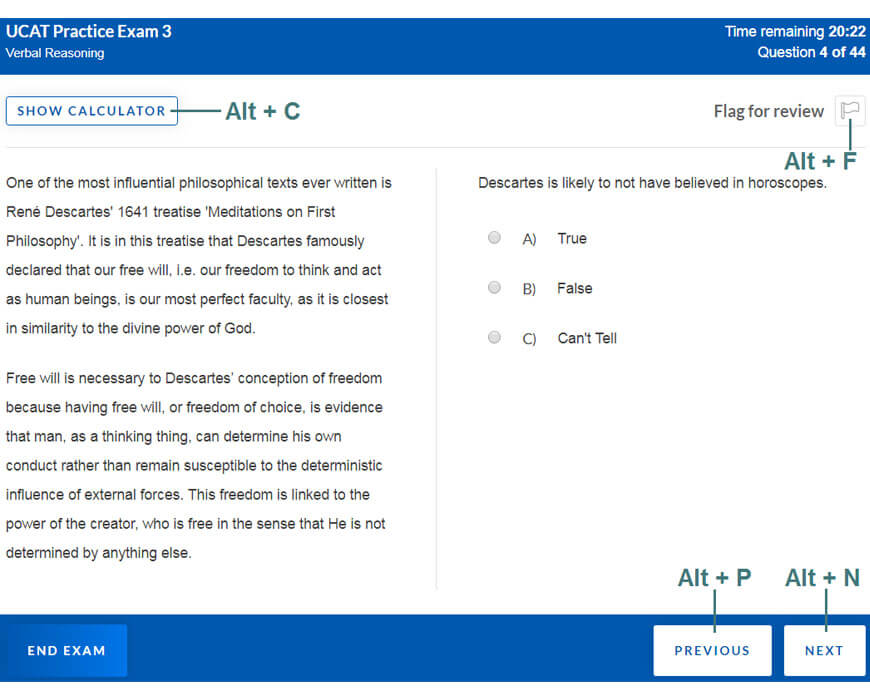UCAT Advice UCAT Exam Strategies
5 UCAT Strategies You Must Know Before Exam Day
With the UCAT exam period right around the corner, here are the UCAT strategies you must know before the big day.
5 UCAT strategies you must know for Exam day
- Pace yourself
- Guess, flag, skip
- Use keyboard shortcuts
- Answer EVERY question
- Preview questions
Let’s take a look at these must-know strategies for UCAT in more detail.
Strategy 1: Pace yourself
The biggest challenge in the UCAT exam is timing.
If you have tried a few practice exams, you’ll know that it can be a challenge to finish the first four subtests in the allotted time.
Make sure you pace yourself on exam day and don’t spend too long on any one question.
Use the per question time limits below as a guide.
| Subtest | Total time allotted | No. of questions | Time per question |
| Verbal Reasoning | 22 minutes | 44 | 30 seconds |
| Decision Making | 37 minutes | 35 | 63 seconds |
| Quantitative Reasoning | 36 minutes | 36 | 43 seconds |
| Situational Judgement | 69 minutes | 69 | 23 seconds |
| Total | 111 minutes (excludes 5 mins instruction time) | 184 |
Strategy 2: Guess, flag and skip difficult questions
Do not fixate on one question.
If you are spending more than the allocated time per question trying to figure out the answer, pick a likely answer, flag the question for review (Alt+F!), and then move on.
Remember, the goal of UCAT is not to get all questions right but to get as many questions right as you can in the given time.

Eliminating options and placing a rough bet on what the answer could be is a useful technique in time constraints.
Most questions do not depend on your previous answers.
Strategy 3: Use the UCAT keyboard shortcuts
Timing is the key challenge of the UCAT exam.
Make sure you are familiar with and have attempted a practice exam using the keyboard shortcuts.
You should be using these to cycle to the next or previous question, flag questions and bring up the calculator.
Using these will save you precious time in the exam!

Strategy 4: Answer every question
There is no negative marking in the UCAT.
Therefore, to maximise your UCAT score, make sure you answer every single question even if you need to guess some of your answers.
Eliminate the answers that you know to be wrong and then make your best guess from those that are left.
Strategy 5: Preview the question
It may be useful to skim the actual questions before reading the information that is given to you, particularly if it is a long passage with a lot of text.
This will give you an idea of what the question is looking for.
When reading the passage, table or graph, you will then be able to focus on the relevant information. Not all of the information you are given will be relevant to answering the questions.

